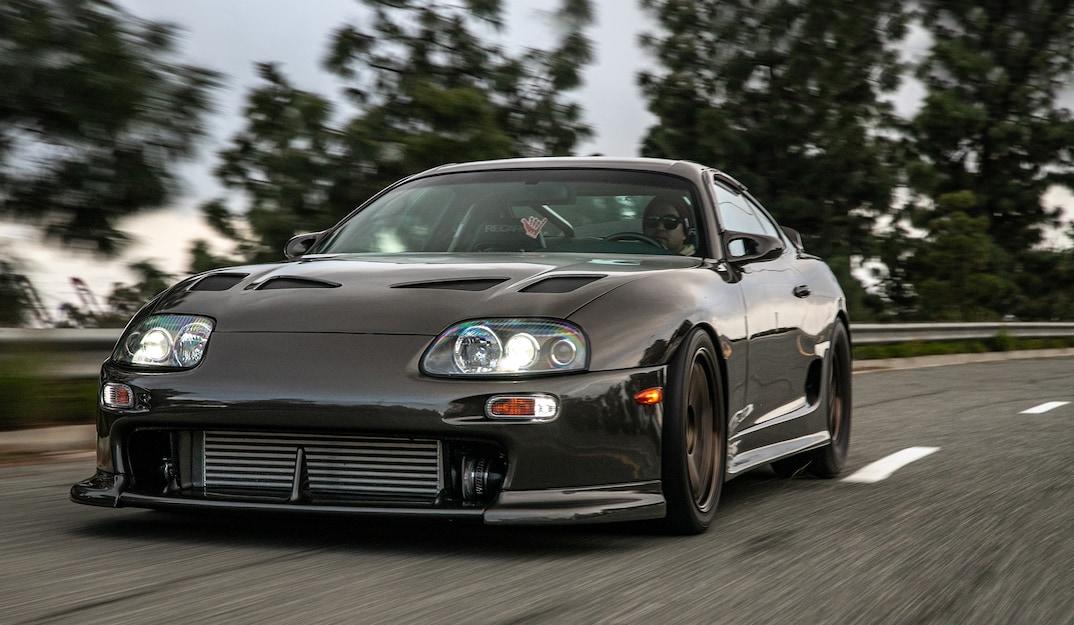Performance cars ignite passion among enthusiasts like no other vehicle segment. They represent speed, engineering excellence, and design that turns heads even while standing still.
But when the engine cools and the title is signed, there’s a quieter force every owner must contend with—resale value.
Some performance cars defy depreciation, holding or even increasing in value thanks to rarity, reliability, or cult status. Others, despite their horsepower and flair, tumble in worth faster than they can hit 60 mph.
In this two-part guide, we explore ten performance cars that follow two drastically different financial arcs.
First, we’ll cover five cars that have proven to be long-term investments—machines that stay valuable because of their pedigree, collectibility, and loyal fan base. These cars often remain desirable for decades, weathering changes in trends and technology.
Then, we’ll examine five performance cars that seemed promising but fell victim to market forces, reliability issues, or lack of cultural staying power.
Their drop in value is often sharp and permanent, making them cautionary tales for buyers seduced by performance without researching long-term worth.
If you’re in the market for a performance car—or simply curious about which models reward or punish owners at resale—this deep dive is your essential roadmap.
Also Read: 5 Cars That Break Right After Warranty and 5 That Keep Going Forever
5 Performance Cars That Stay Valuable
Performance cars often come with the assumption that they’ll lose value quickly due to high mileage, expensive upkeep, or shifting buyer preferences. But that’s not always the case.
Some models have defied the odds, holding strong on the resale market—or even appreciating—thanks to a blend of heritage, limited production, and cultural significance. These are not just fast cars; they’re icons that connect with collectors and enthusiasts on a deeper level.
Whether it’s a final-year model of a beloved generation, a platform known for bulletproof engineering, or a car tied to a racing legacy, the market rewards performance cars with staying power.
Buyers who recognize this typically hold onto their vehicles longer, not just for the enjoyment they offer on the road, but also for the long-term investment potential.
Maintenance records, original equipment, and low production numbers all help elevate these models from mere transportation to appreciating assets.
In this section, we’ll explore five standout performance cars that consistently resist depreciation. These vehicles tend to hold value better than peers in their segment, and in many cases, are worth nearly what they sold for—or more—years after initial release.
These aren’t always the most powerful or expensive options, but they offer a proven track record of staying relevant and desirable in the fast-moving world of automotive value.
We’re highlighting these five cars not just to praise their performance but to show how smart enthusiasts and collectors make strategic choices. This is especially important in a world where flashy specs don’t always equal long-term value.
By examining what makes these particular cars so durable on the resale front, we aim to offer insight into how performance can be measured not just in horsepower, but in dollars retained.
1. Porsche 911 (997 Generation)
When it comes to performance cars that defy depreciation, few names are as dependable as the Porsche 911—especially the 997 generation. Produced between 2005 and 2012, this model perfectly bridges the analog charm of older 911s with the refinement of modern tech.
That rare balance has made it a collector favorite, and values have held strong or even increased in recent years, particularly for naturally aspirated variants like the Carrera S or special trims like the GTS and GT3.
One reason the 997 is so resilient in value is its mechanical honesty. Enthusiasts love its hydraulic steering feel, balanced chassis, and distinctive rear-engine character.
Unlike later models that leaned more heavily into electronics and turbocharging, the 997 is often seen as the last “pure” 911 generation before digital complexity crept in. It also marks the final generation with the classic Porsche silhouette before major redesigns took hold.
We’re including this car not just for its performance and driving dynamics, but for the community and aftermarket it supports.
From forums to track clubs, 997 owners are passionate and active, which helps reinforce demand and keeps values high. Porsche’s extensive factory support and availability of parts further sustain its appeal.
The air-cooled 911s before it may have skyrocketed in value, but the 997 stands out for being relatively attainable while still appreciating.

It’s not uncommon for well-maintained examples to sell for close to their original sticker price, even after a decade on the road. That’s virtually unheard of in performance car circles outside of exotic rarities.
The Porsche 997 is a textbook example of how performance, heritage, and user experience converge to create a car that doesn’t just thrill—it retains its worth. It’s proof that with the right ingredients, even a mainstream sports car can become a long-term investment.
2. Acura Integra Type R (DC2)
Among front-wheel-drive performance cars, the Acura Integra Type R has earned near-mythical status—and it’s not hard to see why.
This lightweight, high-revving coupe may not boast the power of larger sports cars, but its sheer driving purity and motorsport pedigree have made it a collector’s dream.
Originally seen as a tuner’s delight in the early 2000s, the Integra Type R has since matured into a highly sought-after classic, with resale values reflecting its growing cultural and collector significance.
This car was never meant to be mainstream. In the U.S., fewer than 4,000 units were sold across four model years, making it exceedingly rare.
Under the hood, the hand-assembled B18C5 VTEC engine is a marvel of high-revving engineering, pushing out 195 horsepower from just 1.8 liters.
Paired with a close-ratio 5-speed manual and a chassis reinforced with extra spot welds and structural rigidity, the driving feel is immediate, tactile, and responsive—traits often lost in today’s heavier performance cars.
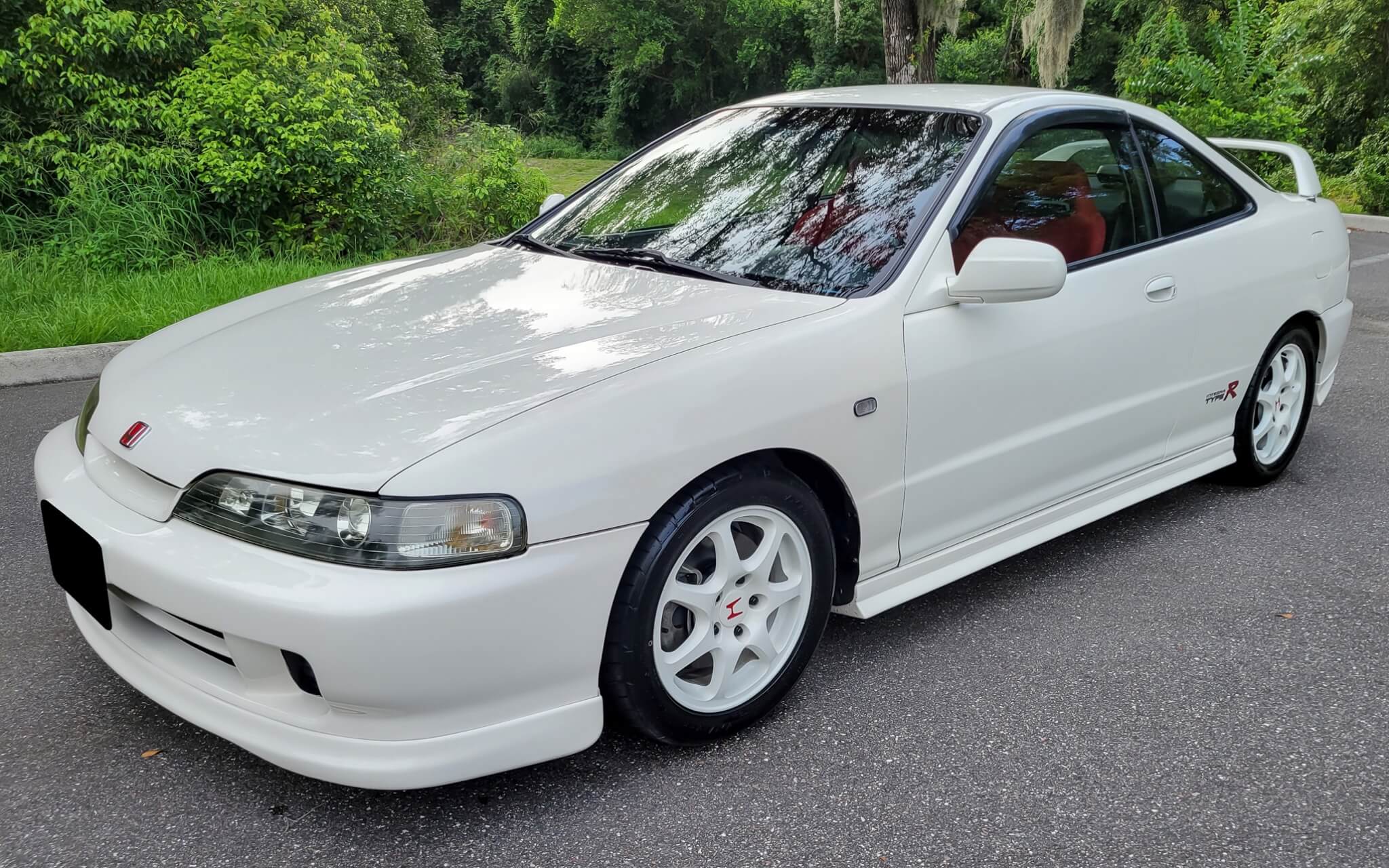
We’re including the Integra Type R because of its sustained—and in some cases, rising—value across enthusiast markets.
Prices for clean, unmodified examples have soared well past $40,000, and certain low-mileage specimens have sold at auction for over $80,000. That’s an astronomical leap from the car’s original $24,000 MSRP.
It’s not just about scarcity or nostalgia, either. The Type R represents the zenith of Honda’s engineering in the ’90s, when the company was at the peak of its precision performance philosophy.
Even today, it stands as a benchmark for lightweight performance, and as emissions and regulations continue to throttle naturally aspirated engines, the Integra Type R becomes even more desirable.
This car is a masterclass in how focused design, motorsport influence, and limited supply can create a performance car that doesn’t just maintain value—it multiplies it.
3. Toyota Supra MK4 (A80)
The Toyota Supra MK4, known internally as the A80, is arguably one of the most iconic Japanese performance cars ever built—and it has the resale values to prove it.
While it started out in the mid-1990s as a somewhat underappreciated grand tourer, the Supra has since become a centerpiece in car culture, helped along by a cult following, bulletproof engineering, and of course, its famous appearance in the Fast & Furious franchise.
At the heart of the MK4 Supra is the legendary 2JZ-GTE engine—a 3.0-liter inline-six with twin sequential turbochargers, capable of over 1,000 horsepower with the right tuning.
Even in stock form, it delivered strong performance, but its iron-block strength and overbuilt internals have made it the go-to platform for enthusiasts seeking massive power.
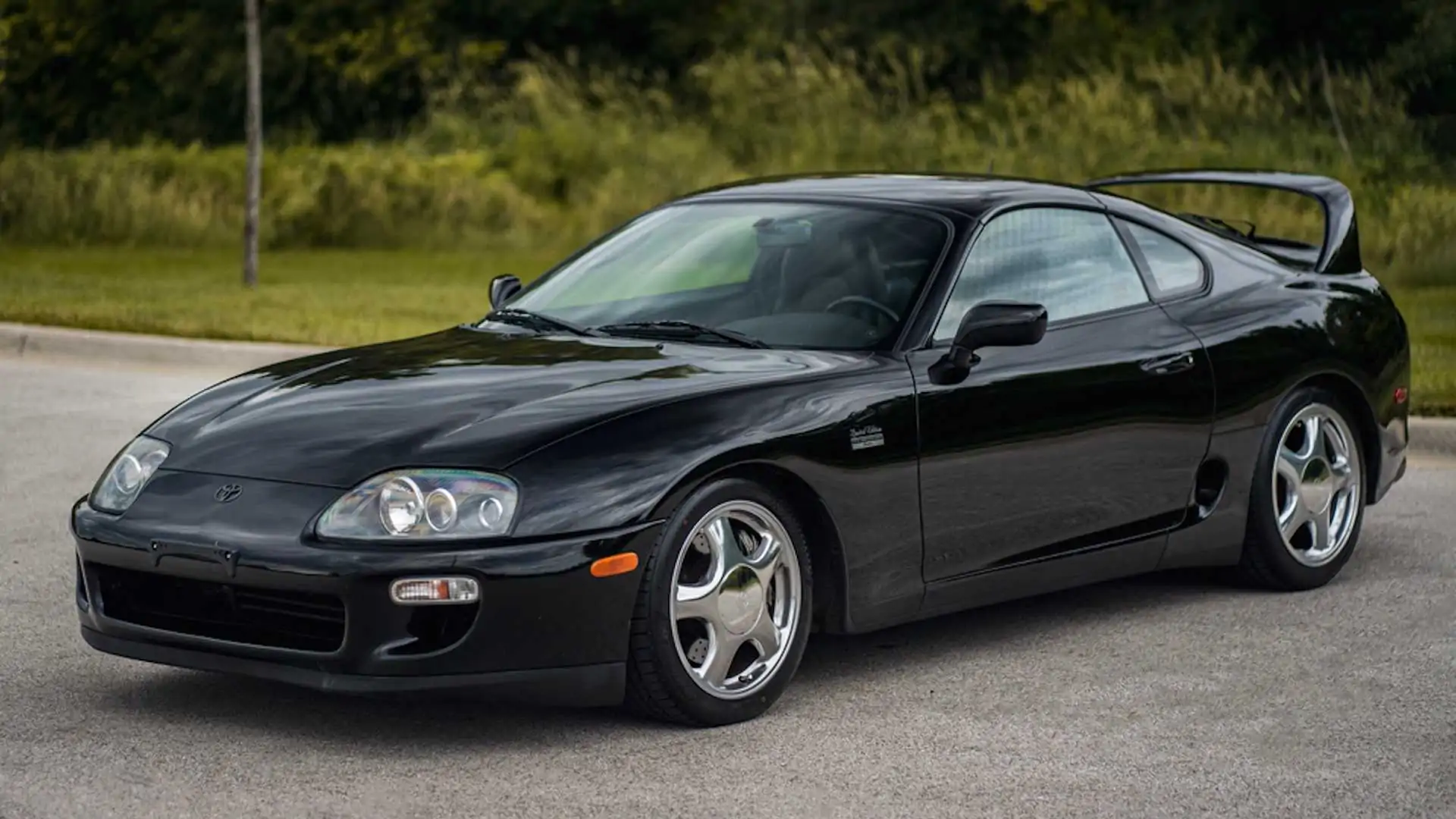
The 6-speed Getrag V160 manual transmission in particular is a prized component, and contributes heavily to the car’s increasing market value.
We’re including this car because it’s one of the rare examples of a 1990s Japanese car that has not only resisted depreciation but has seen consistent appreciation over the past 15 years.
As of now, low-mileage, unmodified examples of the Turbo six-speed variant routinely command six-figure prices. That’s a massive increase from its original MSRP, which ranged from $40,000 to $50,000.
But the MK4 Supra isn’t just about performance potential or pop culture fame. Toyota built it to exacting standards, and its build quality, reliability, and attention to detail have made it a long-lasting platform.
It doesn’t suffer the electronic failures of modern sports cars, and the mechanical components age remarkably well.
This car is a testament to Toyota’s peak engineering years, and as supply continues to shrink and younger collectors enter the market, the Supra’s reputation—and resale value—only strengthens.
4. Lexus LFA
The Lexus LFA is a rare blend of Japanese engineering, exotic performance, and deliberate craftsmanship that has helped it become one of the most collectible modern performance cars.
Unlike many other Lexus models focused on luxury and reliability, the LFA was a moonshot project—a halo car meant to elevate the brand’s image. With only 500 units produced worldwide, it has evolved into a modern classic with appreciating value.
What makes the LFA truly special is its engine: a 4.8-liter naturally aspirated V10 co-developed with Yamaha, capable of revving from idle to redline (9,000 rpm) in just 0.6 seconds.
The sound it produces has often been likened to an F1 car, and Lexus tuned its exhaust system as carefully as a musical instrument.
Its carbon-fiber construction and mid-front engine layout result in a perfectly balanced chassis and a low curb weight, making it a precision weapon on the road or track.
We’re including the LFA because it has defied typical depreciation trends—even for limited-production supercars.
Upon release, it was criticized for its $375,000 price tag, but that price has aged well. Today, auction values often exceed $800,000, and mint-condition examples have broken the $1 million barrier.
Unlike many supercars, the LFA doesn’t suffer from persistent reliability issues or costly service surprises. Its Toyota-based engineering principles ensure that it runs cleanly, with minimal unexpected drama.
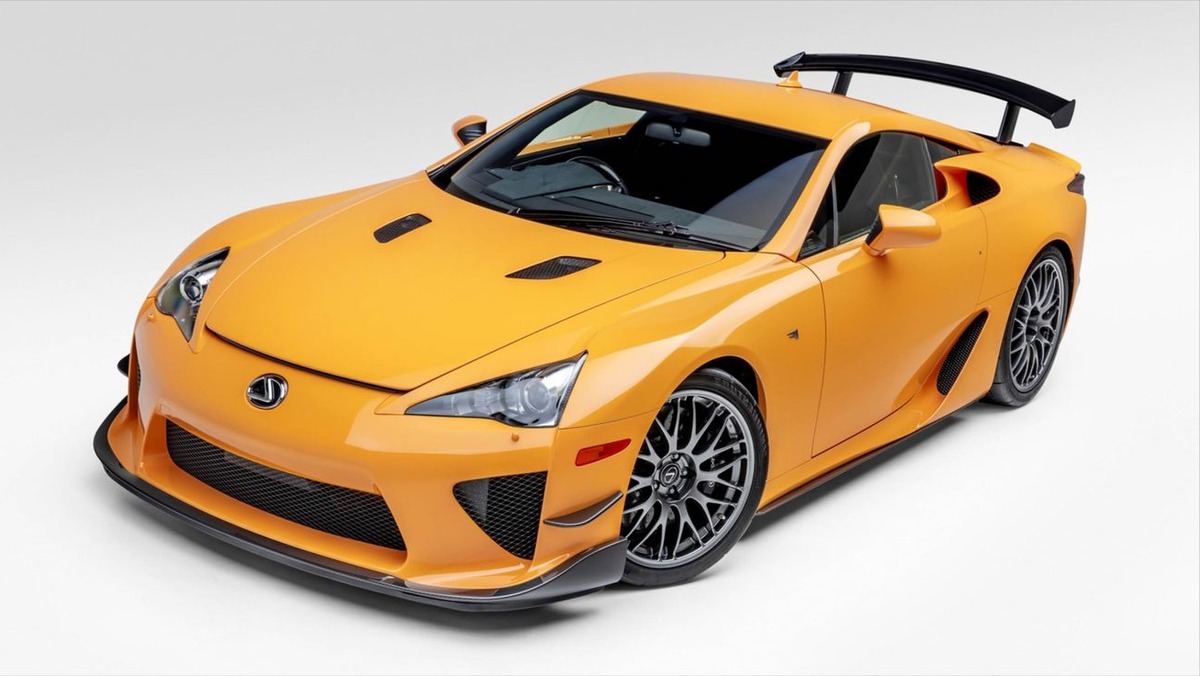
The electronics, engine, and carbon-fiber tub have all aged exceptionally well over more than a decade.
In the current performance car landscape—where electrification is taking over and analog sensations are fading—the LFA’s raw mechanical purity makes it stand out. It is rare, beautiful, and engineered with obsession.
All of these qualities guarantee its long-term desirability and cement its place among cars that truly go the distance in terms of value retention.
5. Acura NSX (First Generation, 1991–2005)
The first-generation Acura NSX is one of the most revered Japanese performance cars ever made. Developed with input from Formula One legend Ayrton Senna, this mid-engine sports car shattered perceptions of what Japanese automakers were capable of during the 1990s.
Its precise handling, ergonomic interior, and bulletproof reliability made it a supercar for the real world. Over time, its legendary status has only grown—and so has its market value.
The NSX came equipped with a naturally aspirated 3.0-liter (later 3.2-liter) V6 engine featuring VTEC and titanium connecting rods.
While it didn’t overwhelm with brute force like some of its European rivals, the NSX delivered a driving experience that emphasized feedback and balance.
Combined with a lightweight aluminum chassis—an industry first at the time—the car became a favorite for enthusiasts who valued finesse over flash.
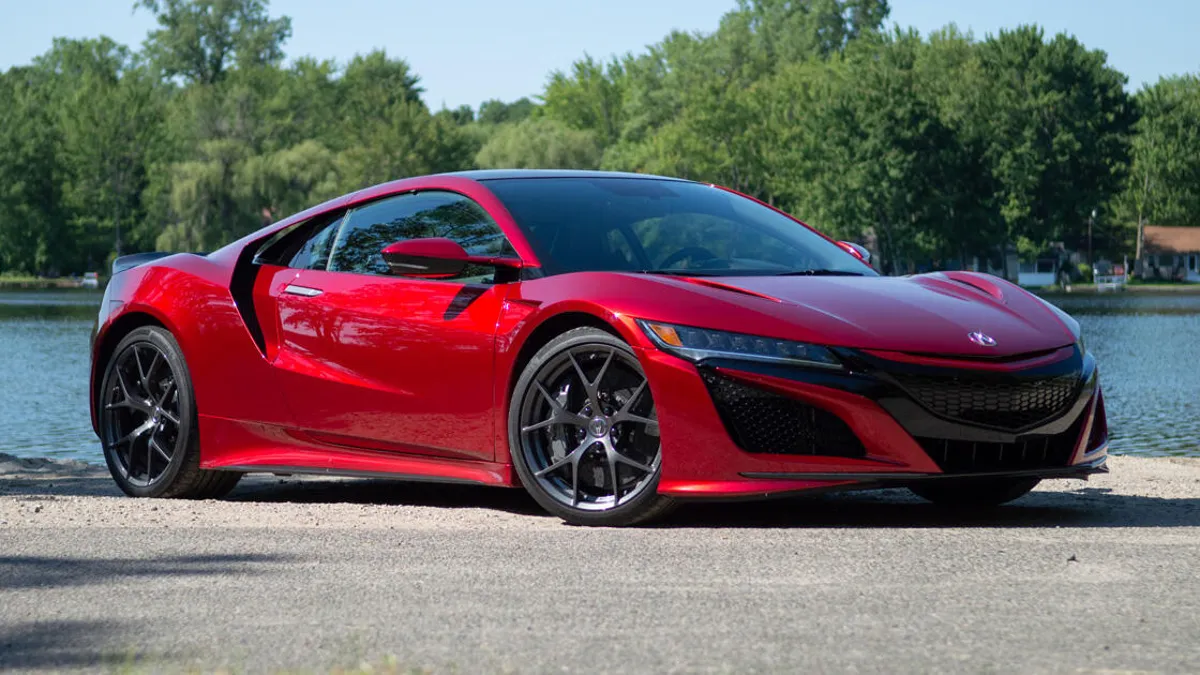
We’re including the NSX because its value trajectory has been remarkably strong in the past decade.
Clean examples that once sold for under $30,000 now command $70,000 to $120,000, depending on condition and mileage. Rarer models like the NSX-T or Zanardi Edition are pushing into six-figure territory with ease.
Importantly, the NSX didn’t just age well—it held up mechanically better than almost any exotic of its era.
While Ferraris and Lamborghinis of the 1990s often require expensive engine-out services and face constant electronic gremlins, the NSX remains reliable even with higher mileage.
Timing belt changes and fluid maintenance are simple, and parts availability is still decent thanks to Honda’s long support window.
It’s a car that rewards its owners both emotionally and financially. Whether you track it, daily drive it, or preserve it as an investment, the first-gen NSX continues to impress.
Its appeal spans collectors, purists, and performance drivers alike, making it a definitive example of a performance car that stands the test of time—and holds its value while doing it.
5 Performance Cars That Become Worthless
Performance cars carry a reputation of speed, prestige, and desirability—but that doesn’t always translate to lasting value.
Some high-performance models, despite impressive horsepower and engineering, face sharp depreciation curves that drain their worth far faster than buyers expect.
In many cases, the issue isn’t just initial price drops—it’s how quickly they spiral into financial burdens due to unreliable components, complex maintenance requirements, or lackluster brand appeal in the resale market.
Many of these vehicles are tempting at first glance. They offer aggressive styling, exciting specifications, and dealership promises of driving thrills. But once the factory warranty ends or newer generations come out, resale values often crash.
Whether due to poor build quality, excessive complexity, or being overshadowed by rivals, these performance cars become cautionary tales. Owners find themselves stuck with vehicles that cost a fortune to maintain but fetch a fraction of their original price when it’s time to sell.
We’re including the following five cars in this list because they all share a similar pattern: initial hype followed by a steep drop in value—often accompanied by mechanical woes or a shrinking parts network.
These aren’t the worst cars ever made, but they represent cases where performance failed to secure long-term value. Some were overpriced to begin with, others lacked true enthusiast support, and a few simply aged poorly due to technological missteps.
Whether you’re a performance car enthusiast shopping on the used market or someone looking to understand depreciation trends, this list offers a grounded view of which models to approach with caution.
Each example reflects real-world market behavior—not just sticker price or dyno charts. These five cars look great in a showroom or YouTube video, but in the long run, they often leave owners with buyer’s remorse and empty wallets.
1. Maserati Ghibli (2014–2021)
At launch, the Maserati Ghibli promised to combine Italian luxury and performance in a sleek, mid-size package aimed squarely at German sport sedans.
With a Ferrari-derived engine, aggressive styling, and the Maserati trident badge, it had all the makings of a premium performer.
But reality didn’t quite align with the marketing. Despite its exotic pedigree, the Ghibli has become one of the fastest-depreciating luxury performance cars of the last decade.
The Ghibli’s 3.0-liter twin-turbo V6 engine—built by Ferrari—sounds great on paper and in practice. But the surrounding experience leaves much to be desired.
The interior quality, especially in early models, falls far short of rivals like the BMW 5 Series or Mercedes-Benz E-Class.
Much of the infotainment system and switchgear was lifted directly from Chrysler, which eroded the sense of Italian exclusivity. Combine that with questionable build quality and high repair costs, and resale values have tanked hard.
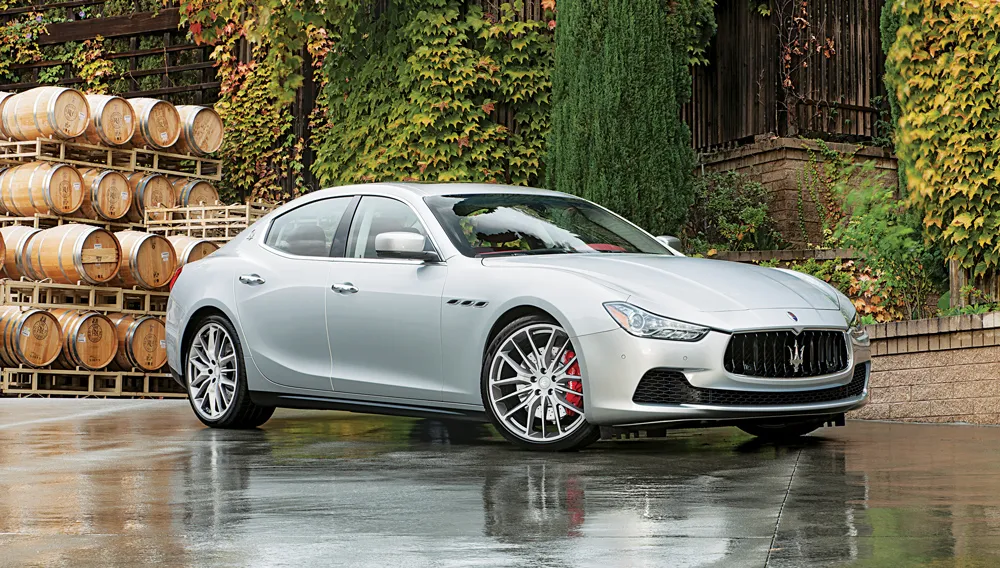
Why are we including it here? Because the Ghibli’s fall from grace is a textbook example of style over substance.
Within just three to five years of ownership, values plummet by more than 50%, and it’s not uncommon to find low-mileage used examples selling for under $25,000—barely half of their original MSRP. That might seem like a deal, but long-term ownership is where the trouble starts.
Parts and service are expensive, dealer support is limited, and reliability is hit-or-miss. Electrical gremlins, suspension issues, and drivetrain quirks become common as these cars age. Insurance is also high, and because resale values are so low, it becomes a poor investment despite its performance branding.
Ultimately, the Ghibli showcases how flashy design and a prestigious badge aren’t enough to guarantee long-term value. For those looking to buy and hold, this is one performance car that too often becomes a financial liability.
2. Cadillac CTS-V (Second Generation, 2009–2015)
The Cadillac CTS-V of the late 2000s and early 2010s was GM’s bold attempt to compete with European sports sedans by combining brute American muscle with luxury features.
Boasting a supercharged 6.2-liter V8 borrowed from the Corvette ZR1, it delivered jaw-dropping horsepower and a thrilling driving experience. However, despite its impressive specs and aggressive styling, this generation of CTS-V has struggled to hold its value in the resale market.
This performance sedan’s downfall comes from a combination of factors. While it offers exhilarating power, it carries the reputation of being a large, thirsty, and somewhat heavy car compared to its more nimble German rivals.
Additionally, interior quality and technology lagged behind competitors, impacting its desirability. Furthermore, the CTS-V’s maintenance costs, particularly for the supercharged engine and associated components, can be expensive once the warranty expires.
We’re including the CTS-V here because its depreciation rate is steep—values drop sharply after just a few years, often losing 60% or more of their original value within the first five years of ownership.
Many owners find that despite its performance credentials, the market treats it as a muscle car with limited luxury appeal, which weighs heavily on its resale price.
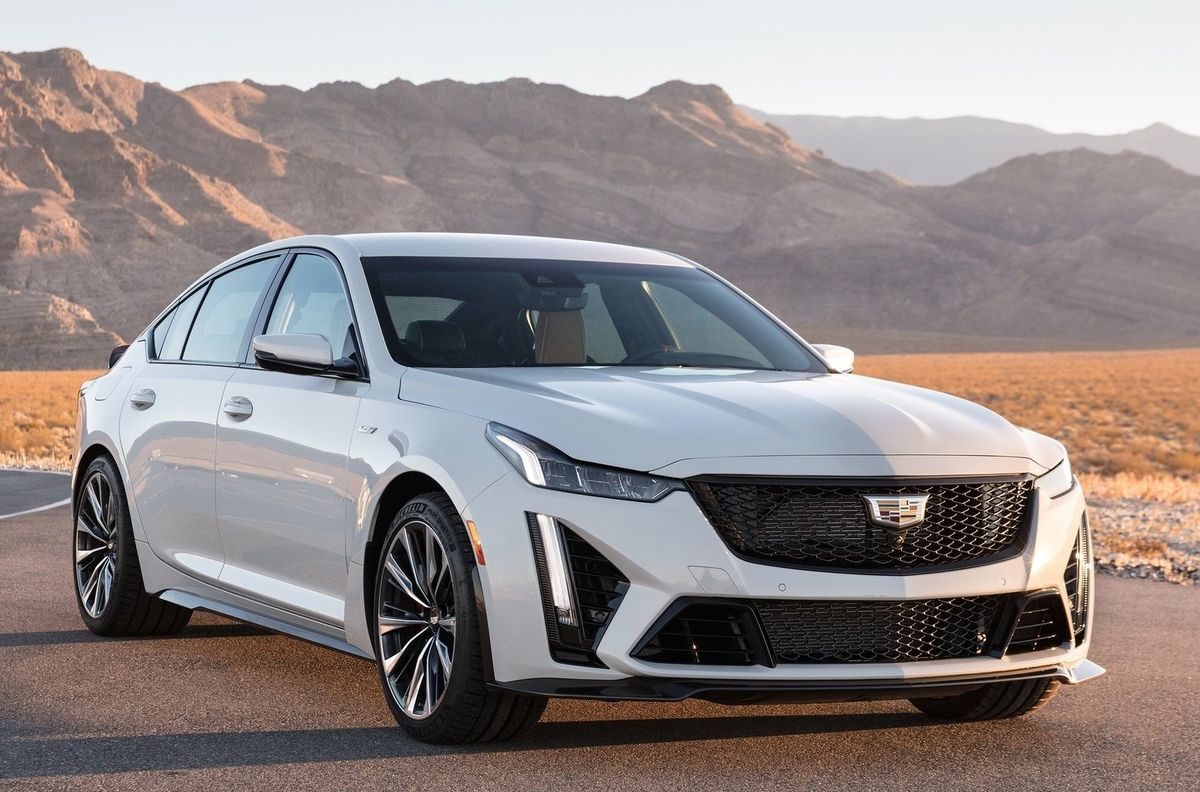
Moreover, insurance premiums and upkeep expenses can quickly add up, making long-term ownership costly.
Enthusiasts appreciate the CTS-V for its raw power and American character, but as an investment or a used purchase for sustained value, it falls short.
For those seeking performance with better long-term value retention, the CTS-V is a cautionary tale illustrating how muscle and luxury don’t always translate into lasting market demand.
3. Nissan 370Z (2009–2020)
The Nissan 370Z carried the torch for the iconic Z-series sports cars, offering a reasonably affordable, rear-wheel-drive coupe with a naturally aspirated V6 and sharp handling.
When it debuted, the 370Z was praised for its driving dynamics and value proposition compared to pricier sports cars. However, despite its initial appeal, the 370Z struggles with long-term value retention, and many examples depreciate steeply as they age.
One key reason for the 370Z’s value decline is its dated design and technology throughout much of its lifecycle.
Nissan kept the model relatively unchanged for over a decade, which left it behind competitors that continuously updated interiors, safety features, and engine options.
Buyers seeking modern amenities or fresh styling often bypass the 370Z in favor of newer rivals like the Toyota GR Supra or Mazda MX-5 Miata.
From a performance standpoint, the 370Z offers a satisfying experience, but its naturally aspirated 3.7-liter V6, while reliable, doesn’t have the same wow factor as turbocharged rivals.
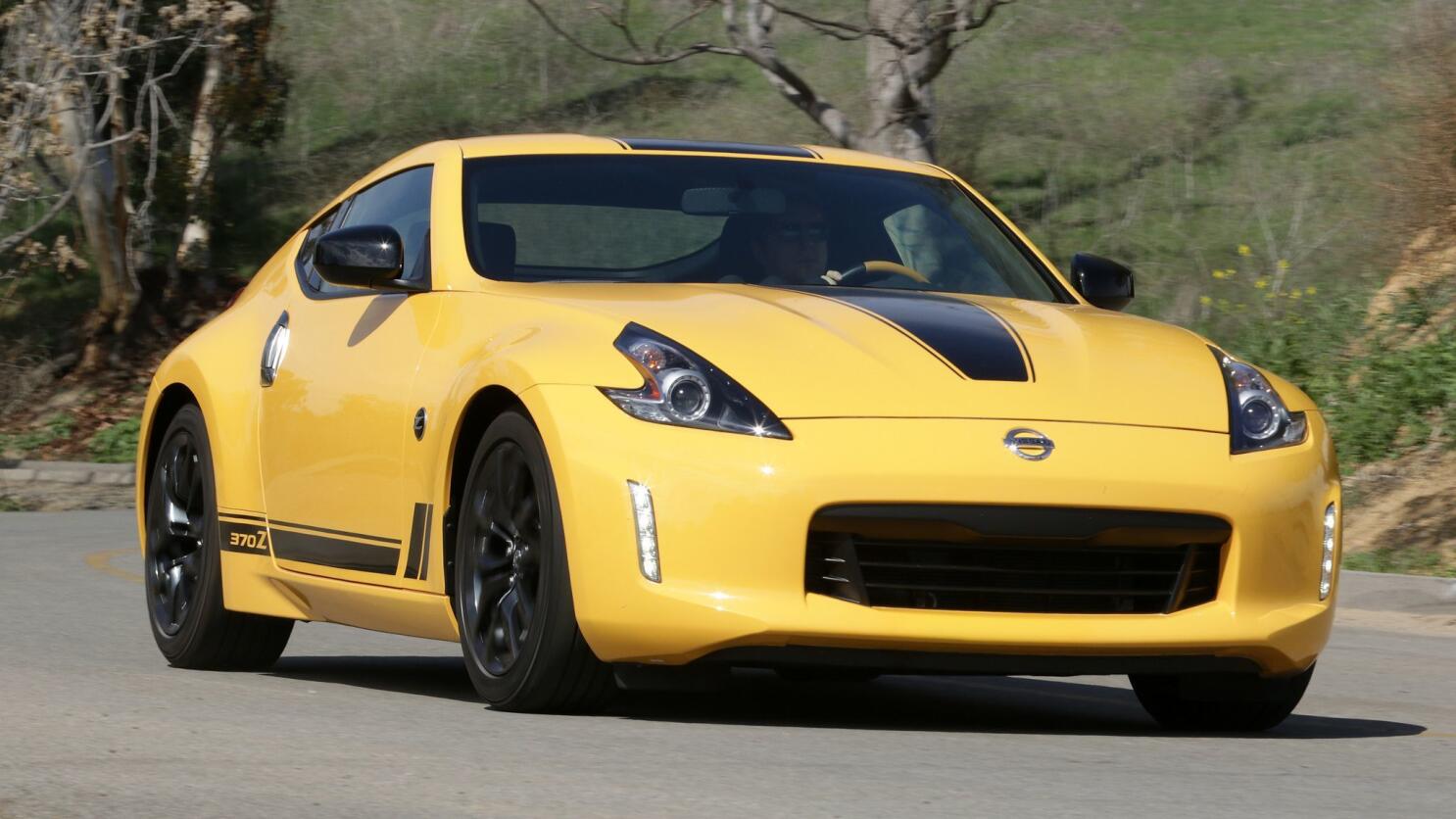
Additionally, fuel economy is average at best, and the car’s interior materials and ergonomics feel dated compared to newer competitors. This contributed to a shrinking pool of potential buyers in the used market.
We include the Nissan 370Z in this list because it exemplifies how a performance car can be technically sound yet still depreciate rapidly due to market trends, evolving buyer expectations, and a lack of updates.
While it remains a favorite among enthusiasts who value driver engagement, its resale value tends to bottom out after a few years, making it a less-than-ideal investment.
4. Ford Mustang (Fifth Generation, 2005–2014)
The fifth-generation Ford Mustang marked a return to retro styling and a more muscular identity, reviving the classic American pony car spirit.
While it was well-received for its powerful V8 engines, affordable pricing, and strong enthusiast following, certain models from this generation have experienced significant depreciation, especially in their performance trims.
The main factor behind the depreciation is the sheer volume of Mustangs produced during this era. With millions sold worldwide, the market is saturated, which naturally drives used prices down.
Moreover, earlier models in this generation sometimes suffered from inconsistent build quality and interior refinement, which made buyers less eager to pay a premium for older cars.
In terms of performance, the Mustang delivers solid muscle car thrills, but it faces stiff competition from more refined sports cars that offer better handling and updated technology.
Additionally, maintenance costs for higher-performance trims—especially the Shelby GT500 versions—can add up, which discourages some prospective buyers.
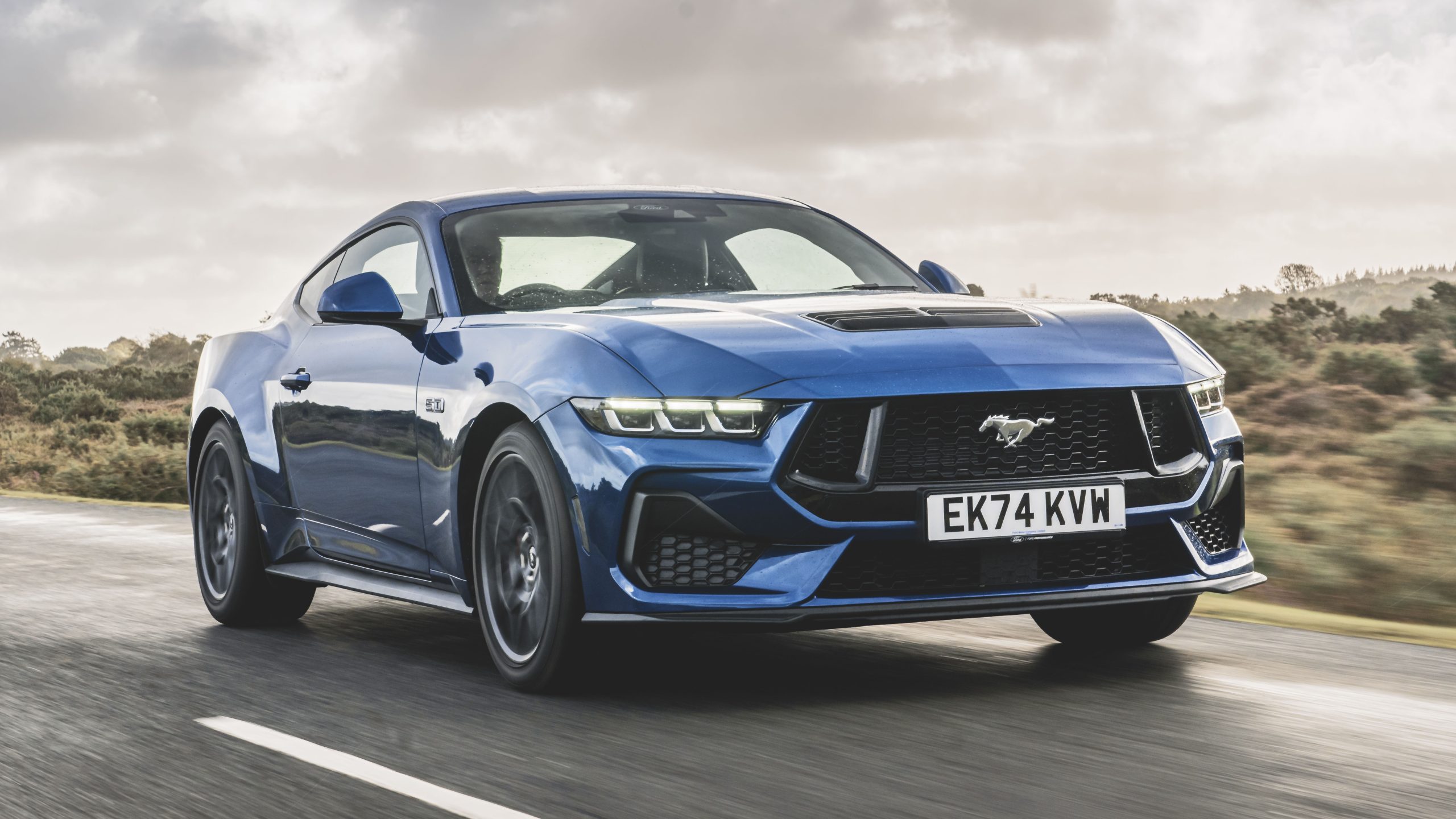
We include the fifth-gen Mustang here because, despite its iconic status and strong brand loyalty, it demonstrates how mass production and perceived quality issues can erode long-term value.
Many owners find that after the warranty expires, resale values drop sharply, sometimes more than 60% within five years, making it a less rewarding investment.
This generation’s depreciation highlights how even beloved performance cars can become financial liabilities when supply outstrips demand and quality concerns weigh heavily on market perception.
5. Alfa Romeo 4C (2014–2020)
The Alfa Romeo 4C burst onto the scene with an exotic, lightweight design and a mid-engine layout that promised an exhilarating, track-focused driving experience at a relatively accessible price.
Its carbon-fiber tub and razor-sharp handling drew acclaim, but despite its initial buzz, the 4C has struggled to maintain value in the resale market.
One key issue contributing to its steep depreciation is Alfa Romeo’s limited brand presence and dealer network in many markets, which complicates maintenance and parts availability.
Additionally, the 4C’s minimalist interior and lack of creature comforts turned off buyers looking for more everyday usability alongside performance.
Performance-wise, the 4C’s turbocharged 1.75-liter four-cylinder punches above its weight in terms of power-to-weight ratio, but the car’s harsh ride and limited practicality made it a niche vehicle for enthusiasts only.
For many buyers, the allure faded quickly once they considered maintenance challenges and the car’s specialized nature.
We include the Alfa Romeo 4C here because it highlights how an exotic and innovative performance car can become a financial risk over time.
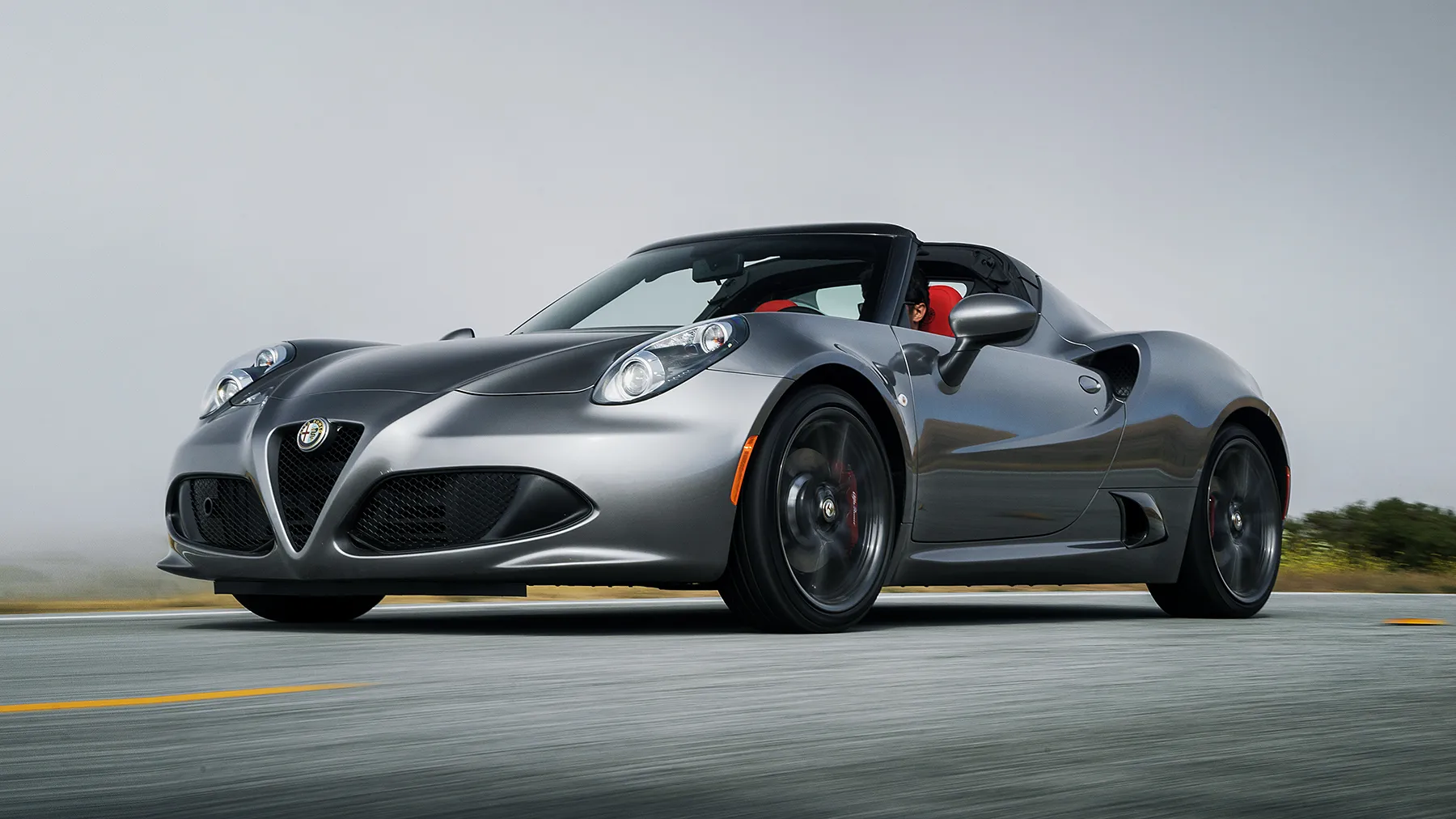
Despite its low production numbers, the 4C’s values have fallen rapidly, with many examples depreciating by 50% or more within the first five years.
The combination of brand perception, limited practicality, and maintenance costs makes the 4C a cautionary tale for buyers seeking performance vehicles that hold their value. It’s a car that excites the senses but disappoints the wallet in the long run.
When it comes to performance cars, value retention is a complex mix of factors that go far beyond just horsepower and speed.
Our exploration of five performance cars that stay valuable alongside five that become worthless underscores how brand reputation, design appeal, rarity, maintenance costs, and buyer perception all play critical roles in shaping a car’s long-term financial outlook.
The cars that maintain strong resale values typically share several key traits: they possess iconic or timeless styling, have a history of reliability or enthusiast following, and often benefit from limited production numbers that keep demand high.
These vehicles become more than just transportation; they turn into collector’s items or coveted pieces of automotive heritage. Owners of such cars can enjoy both exhilarating driving experiences and the reassurance that their investment won’t plummet in value.
On the other hand, the cars that depreciate rapidly often suffer from oversaturation in the market, lack of ongoing updates, or a reputation for costly maintenance and reliability issues.
Even high-performance machinery can lose its luster quickly if it doesn’t meet buyer expectations for technology, comfort, or practicality.
Models with niche appeal, difficult servicing, or uncertain brand prestige frequently find themselves struggling to retain value, leaving owners with disappointing resale prices.
For buyers and collectors, understanding these dynamics is essential. Investing in a performance car isn’t just about raw speed or aggressive styling—it’s about choosing a model that offers long-term value and enjoyment.
Whether you prioritize an iconic badge, limited availability, or proven engineering, the right choice can make all the difference.
Ultimately, this dual perspective helps demystify the often volatile market of performance cars. It highlights that while some models become prized possessions, others quickly become financial burdens.
With careful consideration and knowledge, enthusiasts can navigate this landscape wisely, ensuring that their passion for performance doesn’t come at the cost of poor investment decisions.
Also Read: 5 Cars With Cheap OEM Parts And 5 That Need Rare Imports

